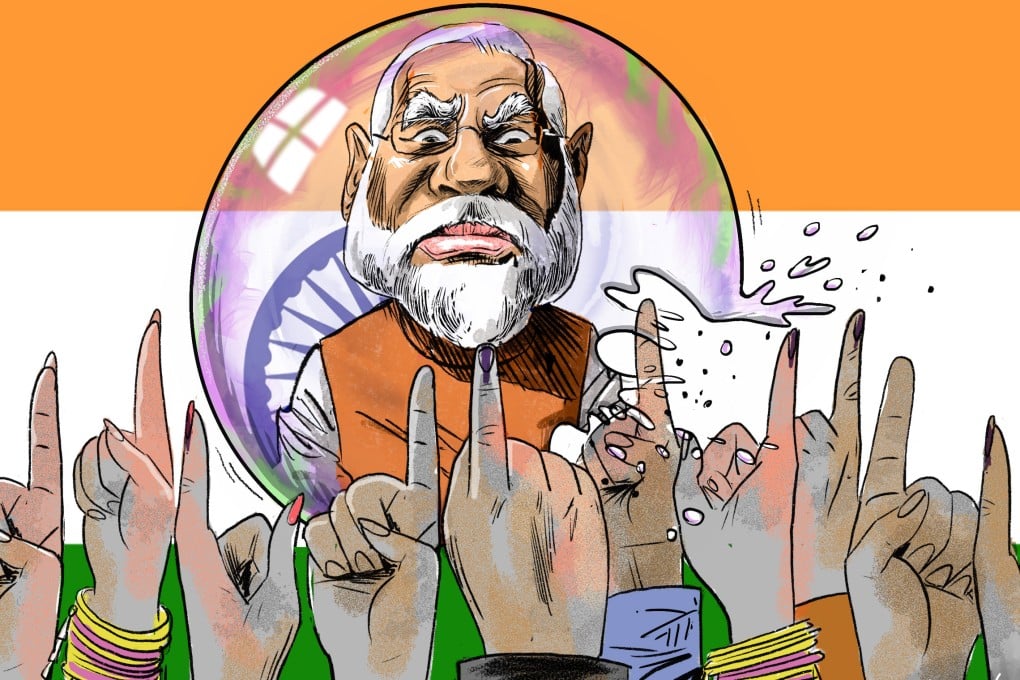Advertisement
Opinion | India’s shock election result shows democracy is still thriving
- While the BJP’s underperformance shocked supporters and observers, Indian voters have restored hope in the country’s democratic process
Reading Time:4 minutes
Why you can trust SCMP
6

On June 1, India, the world’s largest democracy, concluded the last phase of a six-week marathon voting process to elect a new government. Big numbers are par for the course in a country of 1.4 billion people. More than 642 million people – including about 312 million women – cast their vote, with total voter turnout estimated at around 66 per cent.
Advertisement
The results declared on June 4 brought welcome surprises as well as deep dismay. These responses are both innately symbolic and have potentially substantive implications for Indian politics.
The welcome news for the liberal camp is that Indian democracy, which was steadily sliding towards a one-party/one-leader/one-religion template of illiberal authoritarianism since Prime Minister Narendra Modi came to power in 2014, has shown it is relatively robust and spirited.
The fear in many quarters that equitable, non-discriminatory democracy was being slowly strangled has eased. A large cross section of Indian voters used the ballot box to reject the divisive, anti-Muslim Hindutva politics that the ruling Bharatiya Janata Party (BJP) champions.
Modi’s supporters were no doubt shocked by the final election tally after most exit polls and mainstream media projections suggested an emphatic victory for the BJP. Instead, the ruling party secured just 240 seats in the 543-member Lok Sabha and must rely on smaller, regional allies to form a government.
Advertisement
The BJP obtained about 37 per cent of the vote share, which was a similar figure to the 2019 election but did not translate into as many seats. The party took home 303 seats in the latter election and could form a government on its own.

Advertisement
